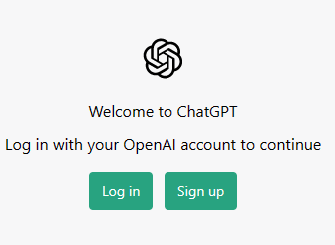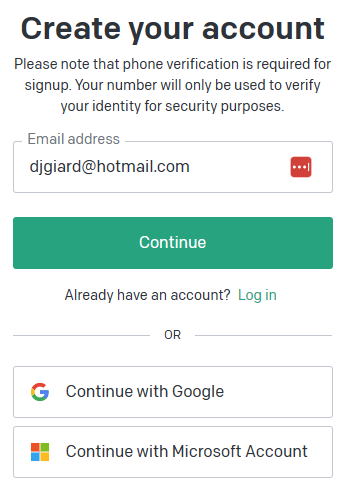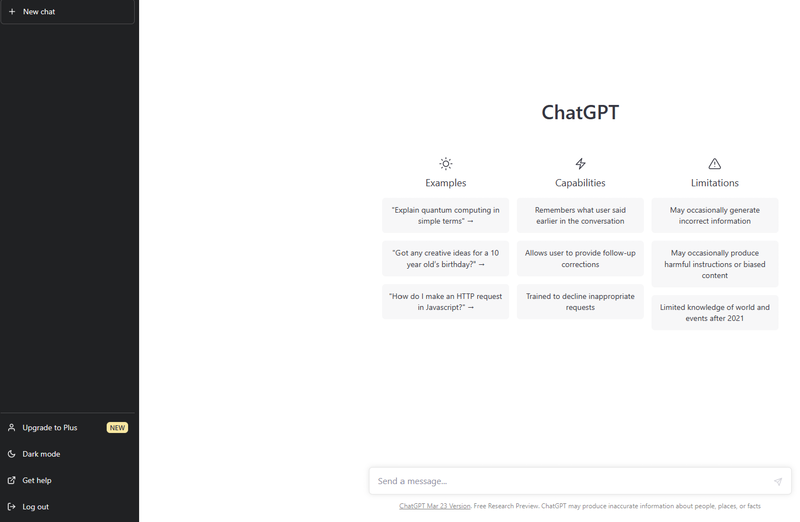Overview
ChatGPT is a language model capable of processing and generating natural language text, trained on a vast corpus of data and designed to assist in a wide range of tasks.
It allows you to ask questions, converse in a natural language (such as English), and respond appropriately. Its answers are usually correct, and it is quick to admit when it does not know something or will not respond to your query. But it is often a good starting point for work or a way of validating or explaining something quickly.
Features
ChatGPT offers the following features beyond a simple search engine or chatbot:
- ChatGPT understands natural language, including colloquialisms, idioms, and slang.
- ChatGPT can generate human-like responses to various questions and prompts, including conversational chit-chat, factual questions, and creative writing prompts.
- ChatGPT can understand and respond in multiple languages, including English, Spanish, French, German, Chinese, and others.
- ChatGPT remembers earlier parts of a conversation and can use this to understand the context of a current question or statement.
- ChatGPT provides an API which allows developers to integrate it into their applications.
- ChatGPT continues to learn, allowing it to improve over time.
Limitations
ChatGPT has limitations, including the following:
- ChatGPT was trained on data from the Internet - data that can contain biases. The generated content is likely to reflect those same biases.
- Sometimes ChatGPT does not understand the full context of a question or discussion.
- ChatGPT's knowledge is not infinite. It can only respond to conversations involving domains on which it has been trained. For example, most of the training data is from 2021 or earlier, so it has limited knowledge of recent world events
- ChatGPT does not generate original content, even though it often appears to do so. Its responses reflect its training data.
- The current version of ChatGPT (ChatGPT-3) works with text. It does not understand images, videos, or sound.
- ChatGPT is sometimes incorrect. It infers answers from the data on which it was trained. The good news is that it is a closed-loop system, meaning that it can accept and learn from feedback. So, you can call out incorrect information and help to improve the model.
Getting Started
To start using ChatGPT, navigate to https://chat.openai.com/.
If you are not logged in, a welcome message displays, as shown in Fig. 1

Fig. 1
Click the [Log in] button if you already have a ChatGPT account. To create a new account, click the [Sign up] button. The "Create your account" dialog displays, as shown in Fig. 2.

Fig. 2
Enter your email address and click the [Continue] button. The "Password" textbox displays, as shown in Fig. 3.

Fig. 3
Enter a password at least eight characters long and click the [Continue] button.
ChatGPT will create an account, log you in with that account, and display a new chat, as shown in Fig. 4.

Fig. 4
Type something in the "Send a message..." textbox to begin using ChatGPT.
Cost
By default, ChatGPT is free to use. However, OpenAI offers a paid version (currently $20 per month) that they brand as "ChatGPT Plus." ChatGPT Plus provides the following advantages:
- Plus uses the more intelligent version 4 of ChatGPT. The free version uses version 3.
- Plus delivers faster responses than the free version.
- ChatGPT assigns a higher priority to Plus requests, so the system will work even when user load is high.
ChatGPT for Work
Here are a few ways to make ChatGPT work for you:
- Understanding and generating code
- Writing summaries, titles, articles, and emails
- Writing job descriptions or professional bios
- Explain complex topics
ChatGPT for Play
ChatGPT is not just for work. You can have fun with it. Here are a few fun things to do.
- Engaging in casual conversations
- Playing games with ChatGPT
- Getting creative with ChatGPT
- Asking ChatGPT for jokes or funny stories
Maximizing your ChatGPT Experience
- Be open-minded
- Ask open-ended questions
- Try different conversation starters
- Experiment
Conclusion
The power of ChatGPT depends on the imagination of those using it. As evidence of its effectiveness, I generated the opening sentence of this article by asking ChatGPT: "Describe ChatGPT in one sentence."